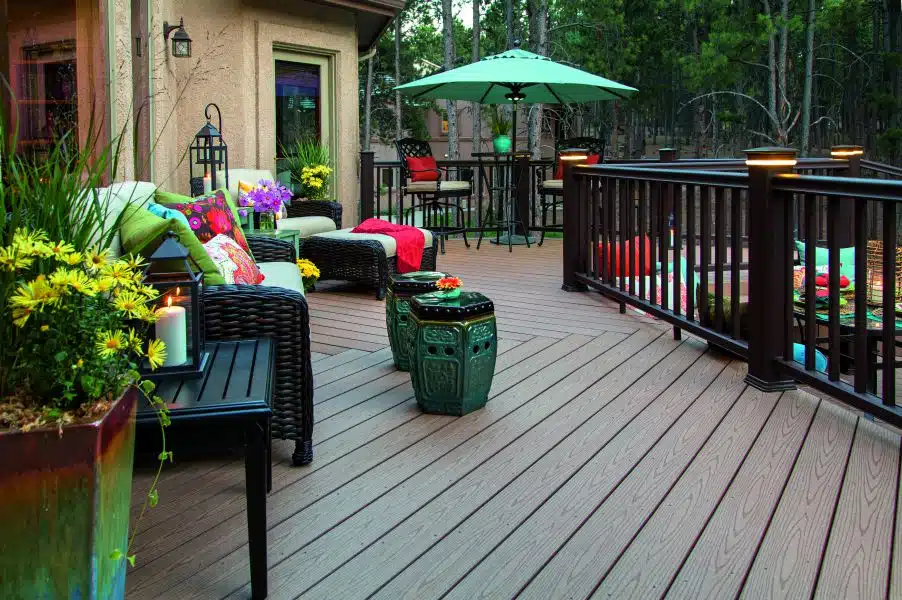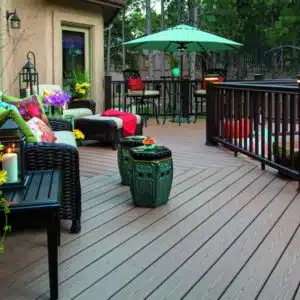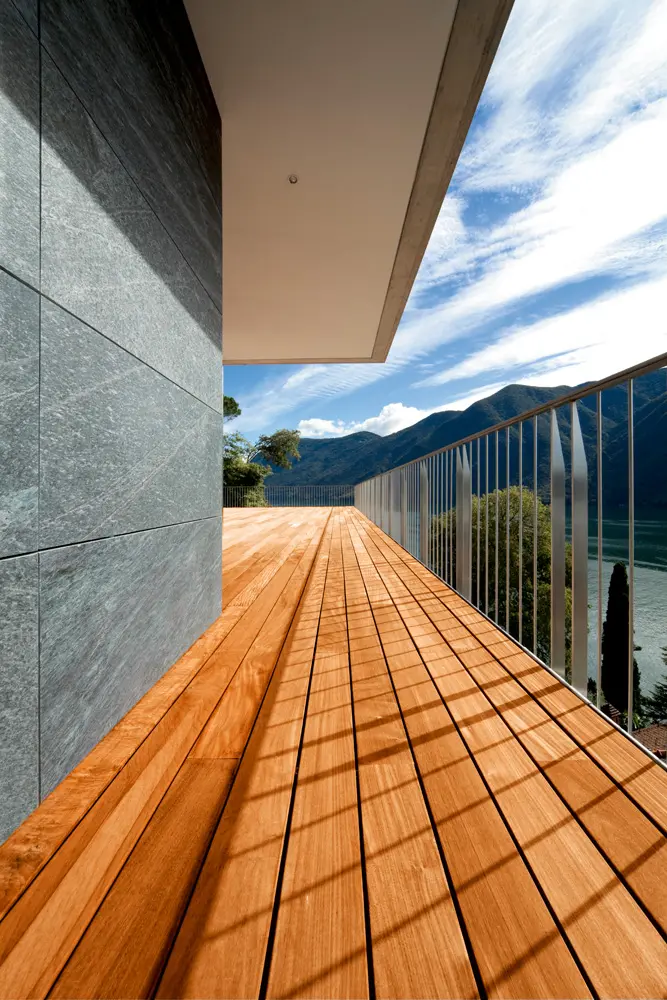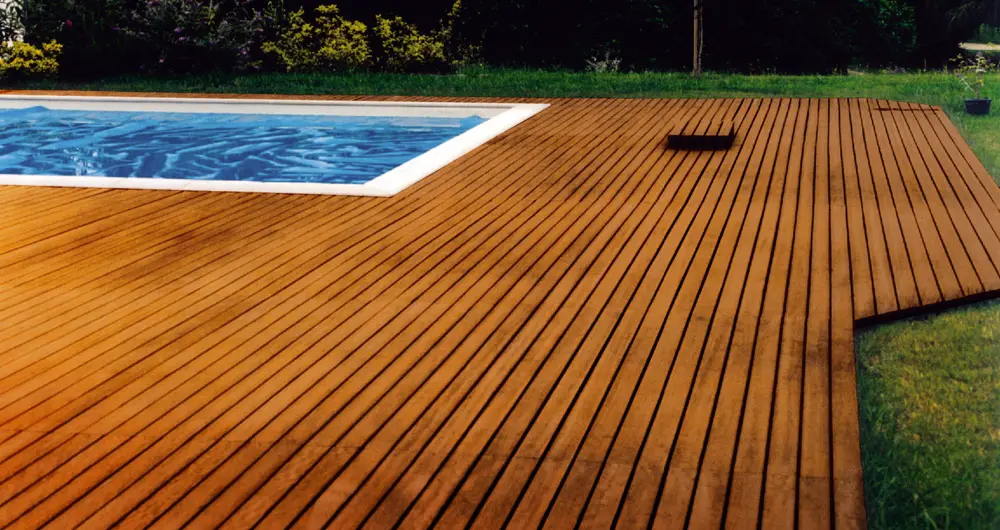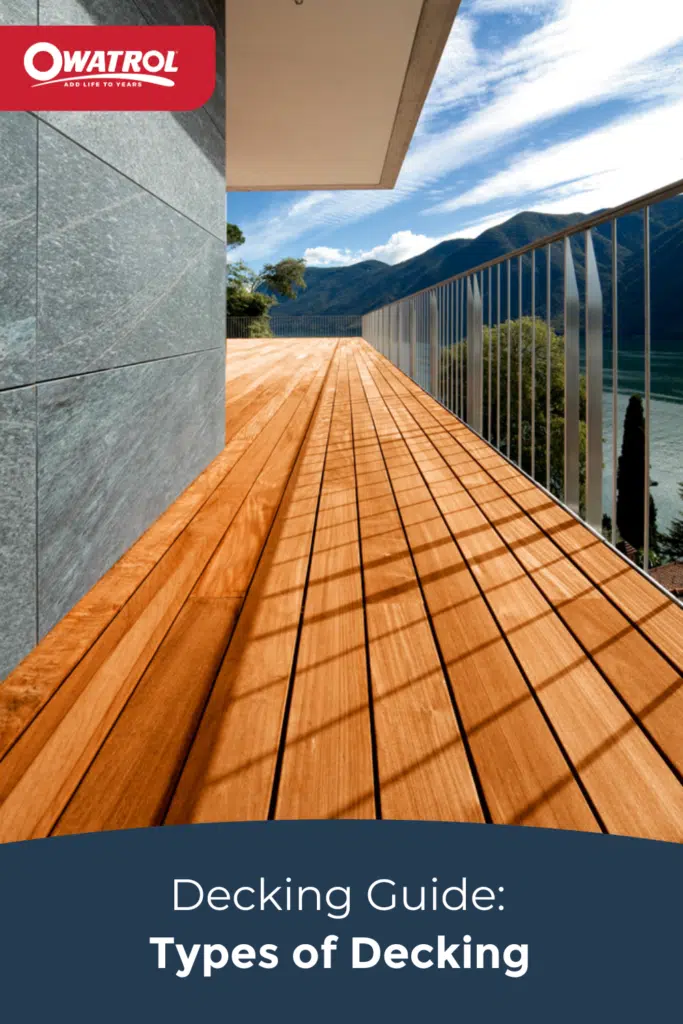This is the first in a series of posts we will be running over the next few weeks to help with the minefield that is choosing, installing and maintaining a garden deck. In this post, we will be giving a brief rundown of the main types of decking available as well as some of the main positives and negatives of each.
Pressure-Treated Softwood Decking
This is an economical option and approximately 75% of all new decking projects are completed using this timber. The main benefits of this type of decking are its affordability and ease of availability. It’s ordinarily made using pine which is then treated to guard against rot, fungus and wood-boring insects. This timber has the characteristic green tinge and is widely used for decking throughout the world.
The main downside to using pressure-treated softwood decking is its durability. They require more effort in preserving and protecting and are susceptible to splitting, cracking and warping. It will require annual cleaning and preserving to prolong its life but can last for 30 years.
Naturally Durable Softwoods – Redwood & Cedar
Both of these species of softwood naturally contain tannins and oils to help prevent rot, decay and attacks from insects. They also give a more natural finish as they are not filled with chemicals. They are up to 3 times more expensive than the pressure treated timber alternative but give a natural-looking finish and require less maintenance. A redwood or cedar deck will typically only need to have a protective finish applied every 3 years or so.
Another thing to consider when buying softwood decking is the quality of the wood in relation to where it grew on the tree. The wood in the heart of the tree (called the heartwood) contains more tannins and oils and as such has more longevity. The wood towards the outside of the tree (called the sapwood) is softer and contains less of these oils so it is more susceptible to rot and decay. You need to ensure the quality of the wood you are purchasing.
Hardwood Decking
There are many species of hardwoods which are used to make boards for decking. These include wood such as oak, IPE, mahogany, massaranduba and cumaru. These woods are incredibly hard and strong and are naturally resistant to rot, fungus and insect attack. This means they require considerably less maintenance in order to keep them protected from the elements.
However, as a result of them being so hard, they can be difficult to work with – especially cutting and drilling! It can be near to impossible to screw into or drive in a nail without drilling a pilot hole. Because of this, many hardwood decks are installed using hidden clips and fastenings which add to the cost.
Hardwood decking is definitely a more expensive option than pressure-treated timber but it is broadly comparable in price to redwood or cedar. You will also need to protect your deck with a protective finish designed specifically for hardwoods which are more difficult to penetrate – such as Owatrol’s Textrol or Deks Olje D1.
Composite Wood Decking
Composite wood is a rapidly expanding market and composite decking is beginning to show itself as a viable alternative to standard wood. It is primarily made from a mixture of wood particles and plastic. This mixture creates a rain and weather resistant material which won’t split, crack or splinter. Some companies also manufacture pure plastic decking so this could be an alternative for you.
However, it just won’t look like wood – there’s no two ways about it. The look is just not as beautiful and natural as that given by a real wood deck. This might not be a problem for you and if not that’s fantastic because a composite deck requires very little maintenance and protection. In fact, all you’ll ever really need to buy is a cleaner and a reviver – just like Owatrol’s Compo-Clean and Compoxell. Cleaning your composite deck is still particularly important though as they can be susceptible to mould and mildew, particularly in damp and shady spots.
Composite wood decking also has the benefit of being available in a variety of colours so no finishing is required. The companies which manufacture it also often manufacture balustrades, mouldings and railings to match. One thing to be aware of is that like timber decking, composite decking does swell as it gets wet. But unlike timber decking, it does this along its length as well as its width. This is something to bear in mind if your deck will be slotting in between fixed structures!
Metal Decking
Metal decking, most commonly aluminium has a lot of things going for it. It’s strong and lightweight and it’s not prone to insect or water damage. It can still be cut easily and the boards slot together tightly creating a water-tight deck with channels to drain away rainwater. This makes it great for a raised or second level deck where people may be walking or sitting below! In addition, aluminium decking pretty much lasts forever. It won’t peel or blister and its powder-coated finish doesn’t require treating.
But, and it’s a big but – it’s really quite expensive! Also, it just doesn’t quite look the same. For us, a deck is a big part of your garden space but part of its impact is its natural beauty and the way it can just sit in the environment. An aluminium deck just doesn’t do this. If you’re looking for a statement piece then this might be it, but be prepared for a pretty bank-breaking quote!
Hopefully, that’s given a pretty good low down on the available options. Next week we’ll be looking at different ways to treat your deck (whether it’s brand new or already weathered).
So there you have it! We hope this post on the types of decking was helpful. If you have any advice or top tips, please feel free to leave them in the comments below. We love hearing from you!
You can also follow us on Twitter, Facebook, Instagram or Pinterest at @OwatrolUK or find us under the hashtag #OwatrolUK

